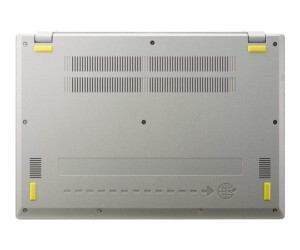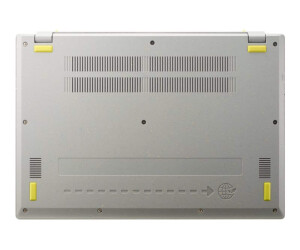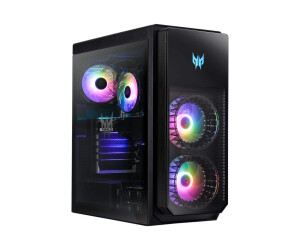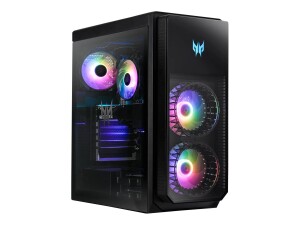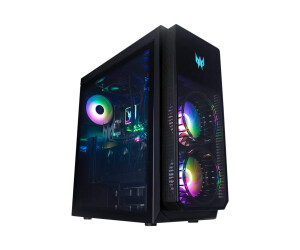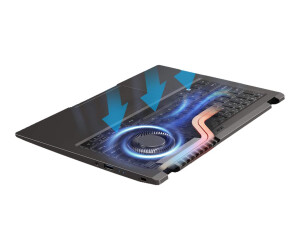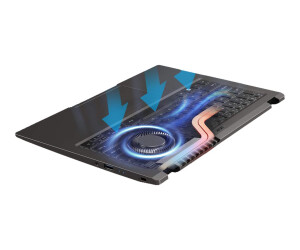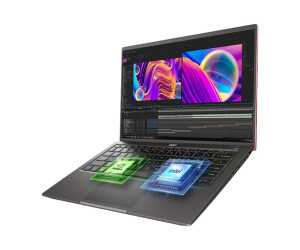NVMe
NVMe
NVMe (Non-Volatile Memory Express) is a powerful and efficient storage interface protocol designed specifically for Solid-State Drives (SSDs) and other non-volatile storage devices. It overcomes the limitations of traditional storage interfaces like Serial ATA (SATA) that were designed for slower rotating Hard Disk Drives (HDDs). NVMe leverages the speed and performance capabilities of modern NAND Flash-based SSDs, offering significantly improved performance, lower latency, and higher scalability.
NVMe operates over the Peripheral Component Interconnect Express (PCIe) bus, which provides a high-bandwidth and low-latency connection. Compared to older storage protocols like SATA, PCIe offers significantly higher bandwidth and enables faster data transfer. By directly communicating over PCIe, NVMe reduces the overhead associated with older protocols and maximizes the efficient utilization of available resources.
One important aspect of NVMe is its ability to enable parallel data transfers. NVMe supports multiple queues and command execution threads, allowing simultaneous processing of multiple input/output operations. This leads to higher I/O performance and improved scalability, especially in scenarios with a high number of concurrent operations.
Furthermore, NVMe provides a new command set optimized for modern storage devices. This command set minimizes overhead and improves the efficiency of command execution. NVMe also supports advanced features such as end-to-end data protection, error reporting, and energy efficiency to enhance the security, reliability, and performance of the storage system.
NVMe also enables efficient management of storage resources. It provides mechanisms for managing namespaces, allowing efficient organization and isolation of logical storage units within the NVMe device. This enables optimal utilization of available storage and better management of storage resources.
The adoption of NVMe has significant implications for the performance and efficiency of storage solutions. NVMe-based SSDs offer significantly improved performance compared to traditional HDDs or even older SSDs using SATA. The low latency, high bandwidth, and efficient data transfer make NVMe the ideal choice for demanding applications requiring fast and reliable storage.
NVMe devices are available in various form factors, including PCIe expansion cards and the M.2 format. The M.2 format has gained popularity due to its compact size and wide compatibility, allowing the use of NVMe in a variety of devices, from laptops and ultrabooks to high-end workstations and servers.
NVMe has revolutionized the storage landscape by providing a powerful and efficient interface for accessing non-volatile memory. With its advantages such as direct communication, parallel data transfer, and efficient command set, NVMe surpasses the limitations of traditional storage protocols. It drives the development of faster, more reliable, and more efficient storage solutions, enabling new possibilities for data-intensive applications such as big data analytics, artificial intelligence, virtualization, and cloud computing. The continuous evolution of NVMe promises even more innovations and improvements in the future.
NVMe (Non-Volatile Memory Express) offers a range of advantages that significantly improve the performance and efficiency of storage solutions. One of the notable advantages of NVMe is its parallelism, which is based on modern SSDs.
Traditional storage protocols like SATA were designed for sequential operations, meaning they had to process sequential commands one after another. This resulted in bottlenecks and limited performance in scenarios with multiple concurrent input/output operations. In contrast, NVMe allows simultaneous processing of multiple operations by supporting multiple input/output queues and command execution threads.
Another advantage of NVMe's parallelism lies in its ability to utilize multiple command execution threads simultaneously. By utilizing multiple threads, NVMe can more efficiently utilize resources and achieve higher throughput. This parallel processing enables better utilization of available hardware resources and leads to improved scalability, especially in high-throughput environments with many concurrent operations.
The parallelism of NVMe is particularly important in application areas requiring high I/O performance, such as databases, big data analytics, virtualization, and cloud computing. By simultaneously processing multiple input/output operations, these applications can benefit from the improved performance and efficiency of NVMe, resulting in reduced response times, increased productivity, and an overall better user experience.
In addition, NVMe's parallelism allows for optimization of storage architecture. By processing multiple operations simultaneously, NVMe storage devices can implement more effective storage structures to improve data integrity, privacy, and fault tolerance. This enables better utilization of available capacity and optimal resource utilization.
Parallelism plays a crucial role in enhancing the performance and efficiency of NVMe. By supporting multiple input/output queues and command execution threads, NVMe enables efficient and simultaneous processing of multiple commands, resulting in higher throughput and improved scalability.
NVMe also introduces a new command set and a streamlined command set architecture. These innovations minimize command overhead and maximize the utilization of underlying SSD hardware. The new NVMe command set is specifically designed to enhance the efficiency and performance of SSDs, offering a wide range of commands aimed at optimizing functionality, data protection, and reliability. By using a lightweight command set, unnecessary complexities are avoided, leading to increased processing speed.
One key element of the NVMe command set is end-to-end data protection, ensuring data integrity throughout the entire transfer process, from the source (host system) to the target (NVMe storage device). By implementing integrity checks and error detection methods at various levels, including command and data transmission, potential data corruption or tampering is effectively prevented.
Energy efficiency mechanisms are another important aspect of the NVMe command set. NVMe enables efficient collaboration between the host system and the storage device to minimize power consumption. This is achieved through features such as dynamic power management, which adjusts the SSD's performance based on the current workload, and targeted shutdown of inactive components. By intelligently managing power states, energy efficiency is improved, and battery life is extended.
Error reporting is another significant aspect of the NVMe command set. NVMe allows for accurate detection and reporting of errors at different levels, including the host system, storage device, and the connection between them. This facilitates error analysis, troubleshooting, and maintenance of NVMe storage solutions. Fast and precise error detection enables effective response to emerging issues and ensures system reliability.
The introduction of an efficient command set and streamlined command set architecture allows NVMe to fully leverage the performance and functionality of the underlying SSD hardware. This results in improved overall performance, reduced latency, and higher data processing efficiency. NVMe offers advanced features that meet the requirements of modern storage solutions, ensuring reliable and secure data transfer.
NVMe (Non-Volatile Memory Express) offers additional advanced features that enhance the performance and management of storage devices, in addition to its mentioned benefits.
One important feature of NVMe is Non-Volatile Memory Write Journaling. This mechanism ensures data consistency in case of sudden power loss or unexpected system failure. When a write operation occurs on an NVMe device, the data is not immediately written to non-volatile memory. Instead, it is temporarily stored in a journal. Only after the write operation is successfully logged in the journal, the data is written to the memory. This ensures that in the event of a power outage or system failure, no inconsistent data remains in the memory. During system restart, the write operations logged in the journal can be restored and completed correctly.
Another significant feature of NVMe is Namespace Management. A namespace is a logical storage unit within an NVMe device. It enables efficient management and isolation of different storage units to ensure optimal organization and utilization of storage space. With Namespace Management, administrators and system settings can define how storage areas should be partitioned and assigned. This allows for flexible configuration and customization of the storage device to meet the specific requirements of an application or system. By isolating namespaces, data can be better protected, and storage resources can be utilized more efficiently.
NVMe offers a range of additional features that improve the performance, reliability, and efficiency of storage devices. These include features such as Quality of Service (QoS), which enables precise control of resource allocation to achieve specific performance goals. NVMe also supports various types of data encryption to ensure the security of stored data. It provides advanced management functions, such as the ability to update the firmware of the NVMe device to improve compatibility and functionality.
With these additional features, NVMe provides a powerful and flexible solution for storage management. It enables efficient data consistency in case of power outages, optimal utilization of storage space, and precise control of resource allocation. By combining these features, NVMe offers a robust and reliable platform for deployment in various areas, including enterprise data centers, cloud computing environments, and high-performance workstations.
NVMe devices are available in various form factors, including PCIe expansion cards and M.2 SSDs. In particular, the M.2 form factor has gained popularity in recent years due to its compact size, high performance, and broad compatibility with different devices.
M.2 is a small form factor specifically designed for use in slim and space-constrained devices. These devices include laptops, ultrabooks, tablets, and mini PCs. Due to its compact size, the M.2 form factor allows for easy integration into these compact devices without taking up much space.
Despite its small size, the M.2 form factor offers impressive performance. It is based on the PCIe bus, which enables high-bandwidth data transfer. NVMe SSDs in the M.2 format can achieve speeds far exceeding those of conventional SATA-based SSDs. This results in faster boot times for operating systems, applications, and files, leading to overall improved system performance.
Another advantage of the M.2 format is its broad compatibility with a variety of devices. In addition to laptops and ultrabooks, M.2 SSDs are also used in desktop computers, workstations, and servers. Many modern motherboards come with M.2 slots, allowing users to easily install NVMe SSDs and take advantage of the benefits of NVMe technology. This high compatibility makes the M.2 format an attractive option for users looking to upgrade their existing systems or equip new systems with fast, reliable, and efficient storage.
In addition to high performance and compatibility, the M.2 format offers other advantages. It supports features such as hot-plug, which means that M.2 devices can be connected and disconnected during operation without the need to restart the system. This greatly facilitates the installation and maintenance of M.2 SSDs.
Furthermore, the M.2 format allows for the utilization of PCIe lanes and the NVMe protocol on a single card. This enables M.2 SSDs to unleash their full performance potential while benefiting from efficient communication via the NVMe protocol.
NVMe devices in the M.2 format provide an attractive solution for users seeking high performance, low space requirements, and broad compatibility. With the increasing prevalence of M.2 slots in modern devices and motherboards, the demand for NVMe SSDs in the M.2 format is expected to continue to rise.
The adoption of NVMe (Non-Volatile Memory Express) has brought about a groundbreaking improvement in storage performance, particularly in demanding applications such as database servers, data centers, and high-performance computing environments. With its low latency and high bandwidth, NVMe is well-suited for workloads that require fast and responsive storage, such as real-time data processing, virtualization, and content delivery.
One of the most remarkable improvements offered by NVMe is the drastic reduction in latency compared to older storage protocols. By directly accessing the PCIe bus and efficient command processing, NVMe enables faster data transfer and request handling. This allows real-time applications to benefit from improved responsiveness and reduced wait times. Particularly in database-driven environments where access to large amounts of data must occur quickly, NVMe's low latency can provide a significant performance boost.
Furthermore, NVMe allows for efficient processing of large data volumes due to its high bandwidth. The PCIe bus provides a wide data pipeline, enabling simultaneous high-speed data transfers. This is especially advantageous for workloads that need to process large amounts of data, such as big data analytics, content delivery networks (CDNs), and database applications. With NVMe, these workloads can benefit from faster load times, accelerated computations, and overall improved performance.
NVMe also enables concurrent processing of multiple input/output (I/O) queues and command execution threads, leading to improved parallelism and concurrency. This is particularly important in environments with many concurrent I/O operations where traditional storage protocols can be constrained by bottlenecks. NVMe optimizes the parallel processing capabilities of modern SSDs, resulting in a significant increase in I/O performance.
The applications for NVMe are diverse and encompass not only database servers, data centers, and high-performance computing but also other areas such as cloud infrastructures, virtual environments, and high-end gaming. In these environments where high storage performance and efficiency are required, NVMe provides an ideal solution.
Overall, the introduction of NVMe into the storage landscape has revolutionized storage performance. By combining low latency, high bandwidth, and parallel processing, NVMe enables faster and more efficient data processing in demanding applications. With the continuous advancement of NVMe technology, it is expected to be adopted in more areas, further improving storage performance.
It is crucial to note that both the host system (e.g., a computer or server) and the storage device must support NVMe to ensure full compatibility and optimal performance. NVMe is a specific communication protocol developed to enable communication between the host system and the NVMe storage device. Therefore, both the host's operating system and the storage device's firmware must support NVMe.
Fortunately, many modern operating systems, including Windows, macOS, and Linux, natively support NVMe. This means that users who have an NVMe-enabled host system usually don't need to install additional drivers or software to take advantage of NVMe. The operating system automatically detects the NVMe storage device and allows for seamless integration into the system.
On the other hand, SSD and storage device manufacturers need to implement NVMe in their products to ensure full protocol support. In recent years, many leading SSD manufacturers have developed and released NVMe-based storage solutions. These NVMe SSDs offer improved performance, reliability, and efficiency compared to traditional storage devices using older protocols. They are available in various form factors, with PCIe expansion cards and M.2 SSDs being the most popular options.
The availability of NVMe-enabled storage solutions has significantly improved in recent years, and many manufacturers now offer a wide range of NVMe SSDs for different applications and requirements. There are plenty of options in terms of storage capacity, speed, and price, allowing users to choose the right NVMe SSD for their specific needs.
The introduction of NVMe has brought significant changes to the storage landscape, ushering in a new era of high-performance storage. By utilizing the NVMe protocol, users can benefit from improved performance, reduced latency, and higher bandwidth. This is particularly relevant for demanding applications and workloads that require fast and responsive storage, such as large databases, virtual machines, big data analytics, and high-performance computing.
However, it is important to note that older systems or older versions of operating systems may not have native NVMe support. In such cases, it may be necessary to install specific drivers or firmware updates to correctly recognize and utilize NVMe devices. It is recommended to check compatibility with the host system and ensure the necessary drivers or updates are available before purchasing an NVMe storage device.
In summary, support for NVMe is crucial on both the host system and storage device sides to fully leverage the benefits of this revolutionary storage technology. Modern operating systems typically offer native NVMe support, and many SSD manufacturers provide NVMe-based storage solutions. With NVMe, users can achieve improved storage performance and efficiency, resulting in better performance in demanding applications and workloads.
NVMe (Non-Volatile Memory Express) is a powerful and efficient storage interface protocol designed specifically for modern non-volatile storage devices. Compared to older storage protocols, NVMe offers a range of advanced features and characteristics that contribute to a significant improvement in storage performance and responsiveness.
One standout feature of NVMe is its ability to leverage parallelism. It takes advantage of the parallelism of modern SSDs by enabling concurrent processing of multiple input/output (I/O) queues and command execution threads. This allows NVMe to achieve high concurrency rates and greatly enhance I/O performance, particularly in scenarios with multiple simultaneous I/O operations. This results in faster read and write operations and overall better storage system performance.
Another important aspect of NVMe is its lean and lightweight command set architecture. The efficient command set minimizes overhead and maximizes the utilization of the underlying SSD hardware. NVMe supports advanced features such as end-to-end data protection, power efficiency, and error reporting. This ensures high data integrity and reliability while achieving efficient utilization of system resources.
NVMe also offers additional features that further enhance performance and reliability. One example is Non-Volatile Memory Write Journaling, which maintains data consistency in the event of a sudden power loss. Journaling ensures that no data is lost or corrupted. Additionally, namespace management allows for efficient management and isolation of logical storage units within the NVMe device. This facilitates organization and utilization of storage space and increases system flexibility.
NVMe devices are typically available as PCIe expansion cards or M.2 SSDs. The M.2 form factor has gained popularity due to its compact size, high performance, and compatibility with a variety of devices. It allows for easy installation and integration into laptops, desktops, and other systems.
NVMe (Non-Volatile Memory Express) is a powerful and efficient storage interface protocol designed specifically for Solid-State Drives (SSDs) and other non-volatile storage devices. It overcomes the limitations of traditional storage interfaces like Serial ATA (SATA) that were designed for slower rotating Hard Disk Drives (HDDs). NVMe leverages the speed and performance capabilities of modern NAND Flash-based SSDs, offering significantly improved performance, lower latency, and higher scalability.
NVMe operates over the Peripheral Component Interconnect Express (PCIe) bus, which provides a high-bandwidth and low-latency connection. Compared to older storage protocols like SATA, PCIe offers significantly higher bandwidth and enables faster data transfer. By directly communicating over PCIe, NVMe reduces the overhead associated with older protocols and maximizes the efficient utilization of available resources.
One important aspect of NVMe is its ability to enable parallel data transfers. NVMe supports multiple queues and command execution threads, allowing simultaneous processing of multiple input/output operations. This leads to higher I/O performance and improved scalability, especially in scenarios with a high number of concurrent operations.
Furthermore, NVMe provides a new command set optimized for modern storage devices. This command set minimizes overhead and improves the efficiency of command execution. NVMe also supports advanced features such as end-to-end data protection, error reporting, and energy efficiency to enhance the security, reliability, and performance of the storage system.
NVMe also enables efficient management of storage resources. It provides mechanisms for managing namespaces, allowing efficient organization and isolation of logical storage units within the NVMe device. This enables optimal utilization of available storage and better management of storage resources.
The adoption of NVMe has significant implications for the performance and efficiency of storage solutions. NVMe-based SSDs offer significantly improved performance compared to traditional HDDs or even older SSDs using SATA. The low latency, high bandwidth, and efficient data transfer make NVMe the ideal choice for demanding applications requiring fast and reliable storage.
NVMe devices are available in various form factors, including PCIe expansion cards and the M.2 format. The M.2 format has gained popularity due to its compact size and wide compatibility, allowing the use of NVMe in a variety of devices, from laptops and ultrabooks to high-end workstations and servers.
NVMe has revolutionized the storage landscape by providing a powerful and efficient interface for accessing non-volatile memory. With its advantages such as direct communication, parallel data transfer, and efficient command set, NVMe surpasses the limitations of traditional storage protocols. It drives the development of faster, more reliable, and more efficient storage solutions, enabling new possibilities for data-intensive applications such as big data analytics, artificial intelligence, virtualization, and cloud computing. The continuous evolution of NVMe promises even more innovations and improvements in the future.
NVMe (Non-Volatile Memory Express) offers a range of advantages that significantly improve the performance and efficiency of storage solutions. One of the notable advantages of NVMe is its parallelism, which is based on modern SSDs.
Traditional storage protocols like SATA were designed for sequential operations, meaning they had to process sequential commands one after another. This resulted in bottlenecks and limited performance in scenarios with multiple concurrent input/output operations. In contrast, NVMe allows simultaneous processing of multiple operations by supporting multiple input/output queues and command execution threads.
Another advantage of NVMe's parallelism lies in its ability to utilize multiple command execution threads simultaneously. By utilizing multiple threads, NVMe can more efficiently utilize resources and achieve higher throughput. This parallel processing enables better utilization of available hardware resources and leads to improved scalability, especially in high-throughput environments with many concurrent operations.
The parallelism of NVMe is particularly important in application areas requiring high I/O performance, such as databases, big data analytics, virtualization, and cloud computing. By simultaneously processing multiple input/output operations, these applications can benefit from the improved performance and efficiency of NVMe, resulting in reduced response times, increased productivity, and an overall better user experience.
In addition, NVMe's parallelism allows for optimization of storage architecture. By processing multiple operations simultaneously, NVMe storage devices can implement more effective storage structures to improve data integrity, privacy, and fault tolerance. This enables better utilization of available capacity and optimal resource utilization.
Parallelism plays a crucial role in enhancing the performance and efficiency of NVMe. By supporting multiple input/output queues and command execution threads, NVMe enables efficient and simultaneous processing of multiple commands, resulting in higher throughput and improved scalability.
NVMe also introduces a new command set and a streamlined command set architecture. These innovations minimize command overhead and maximize the utilization of underlying SSD hardware. The new NVMe command set is specifically designed to enhance the efficiency and performance of SSDs, offering a wide range of commands aimed at optimizing functionality, data protection, and reliability. By using a lightweight command set, unnecessary complexities are avoided, leading to increased processing speed.
One key element of the NVMe command set is end-to-end data protection, ensuring data integrity throughout the entire transfer process, from the source (host system) to the target (NVMe storage device). By implementing integrity checks and error detection methods at various levels, including command and data transmission, potential data corruption or tampering is effectively prevented.
Energy efficiency mechanisms are another important aspect of the NVMe command set. NVMe enables efficient collaboration between the host system and the storage device to minimize power consumption. This is achieved through features such as dynamic power management, which adjusts the SSD's performance based on the current workload, and targeted shutdown of inactive components. By intelligently managing power states, energy efficiency is improved, and battery life is extended.
Error reporting is another significant aspect of the NVMe command set. NVMe allows for accurate detection and reporting of errors at different levels, including the host system, storage device, and the connection between them. This facilitates error analysis, troubleshooting, and maintenance of NVMe storage solutions. Fast and precise error detection enables effective response to emerging issues and ensures system reliability.
The introduction of an efficient command set and streamlined command set architecture allows NVMe to fully leverage the performance and functionality of the underlying SSD hardware. This results in improved overall performance, reduced latency, and higher data processing efficiency. NVMe offers advanced features that meet the requirements of modern storage solutions, ensuring reliable and secure data transfer.
NVMe (Non-Volatile Memory Express) offers additional advanced features that enhance the performance and management of storage devices, in addition to its mentioned benefits.
One important feature of NVMe is Non-Volatile Memory Write Journaling. This mechanism ensures data consistency in case of sudden power loss or unexpected system failure. When a write operation occurs on an NVMe device, the data is not immediately written to non-volatile memory. Instead, it is temporarily stored in a journal. Only after the write operation is successfully logged in the journal, the data is written to the memory. This ensures that in the event of a power outage or system failure, no inconsistent data remains in the memory. During system restart, the write operations logged in the journal can be restored and completed correctly.
Another significant feature of NVMe is Namespace Management. A namespace is a logical storage unit within an NVMe device. It enables efficient management and isolation of different storage units to ensure optimal organization and utilization of storage space. With Namespace Management, administrators and system settings can define how storage areas should be partitioned and assigned. This allows for flexible configuration and customization of the storage device to meet the specific requirements of an application or system. By isolating namespaces, data can be better protected, and storage resources can be utilized more efficiently.
NVMe offers a range of additional features that improve the performance, reliability, and efficiency of storage devices. These include features such as Quality of Service (QoS), which enables precise control of resource allocation to achieve specific performance goals. NVMe also supports various types of data encryption to ensure the security of stored data. It provides advanced management functions, such as the ability to update the firmware of the NVMe device to improve compatibility and functionality.
With these additional features, NVMe provides a powerful and flexible solution for storage management. It enables efficient data consistency in case of power outages, optimal utilization of storage space, and precise control of resource allocation. By combining these features, NVMe offers a robust and reliable platform for deployment in various areas, including enterprise data centers, cloud computing environments, and high-performance workstations.
NVMe devices are available in various form factors, including PCIe expansion cards and M.2 SSDs. In particular, the M.2 form factor has gained popularity in recent years due to its compact size, high performance, and broad compatibility with different devices.
M.2 is a small form factor specifically designed for use in slim and space-constrained devices. These devices include laptops, ultrabooks, tablets, and mini PCs. Due to its compact size, the M.2 form factor allows for easy integration into these compact devices without taking up much space.
Despite its small size, the M.2 form factor offers impressive performance. It is based on the PCIe bus, which enables high-bandwidth data transfer. NVMe SSDs in the M.2 format can achieve speeds far exceeding those of conventional SATA-based SSDs. This results in faster boot times for operating systems, applications, and files, leading to overall improved system performance.
Another advantage of the M.2 format is its broad compatibility with a variety of devices. In addition to laptops and ultrabooks, M.2 SSDs are also used in desktop computers, workstations, and servers. Many modern motherboards come with M.2 slots, allowing users to easily install NVMe SSDs and take advantage of the benefits of NVMe technology. This high compatibility makes the M.2 format an attractive option for users looking to upgrade their existing systems or equip new systems with fast, reliable, and efficient storage.
In addition to high performance and compatibility, the M.2 format offers other advantages. It supports features such as hot-plug, which means that M.2 devices can be connected and disconnected during operation without the need to restart the system. This greatly facilitates the installation and maintenance of M.2 SSDs.
Furthermore, the M.2 format allows for the utilization of PCIe lanes and the NVMe protocol on a single card. This enables M.2 SSDs to unleash their full performance potential while benefiting from efficient communication via the NVMe protocol.
NVMe devices in the M.2 format provide an attractive solution for users seeking high performance, low space requirements, and broad compatibility. With the increasing prevalence of M.2 slots in modern devices and motherboards, the demand for NVMe SSDs in the M.2 format is expected to continue to rise.
The adoption of NVMe (Non-Volatile Memory Express) has brought about a groundbreaking improvement in storage performance, particularly in demanding applications such as database servers, data centers, and high-performance computing environments. With its low latency and high bandwidth, NVMe is well-suited for workloads that require fast and responsive storage, such as real-time data processing, virtualization, and content delivery.
One of the most remarkable improvements offered by NVMe is the drastic reduction in latency compared to older storage protocols. By directly accessing the PCIe bus and efficient command processing, NVMe enables faster data transfer and request handling. This allows real-time applications to benefit from improved responsiveness and reduced wait times. Particularly in database-driven environments where access to large amounts of data must occur quickly, NVMe's low latency can provide a significant performance boost.
Furthermore, NVMe allows for efficient processing of large data volumes due to its high bandwidth. The PCIe bus provides a wide data pipeline, enabling simultaneous high-speed data transfers. This is especially advantageous for workloads that need to process large amounts of data, such as big data analytics, content delivery networks (CDNs), and database applications. With NVMe, these workloads can benefit from faster load times, accelerated computations, and overall improved performance.
NVMe also enables concurrent processing of multiple input/output (I/O) queues and command execution threads, leading to improved parallelism and concurrency. This is particularly important in environments with many concurrent I/O operations where traditional storage protocols can be constrained by bottlenecks. NVMe optimizes the parallel processing capabilities of modern SSDs, resulting in a significant increase in I/O performance.
The applications for NVMe are diverse and encompass not only database servers, data centers, and high-performance computing but also other areas such as cloud infrastructures, virtual environments, and high-end gaming. In these environments where high storage performance and efficiency are required, NVMe provides an ideal solution.
Overall, the introduction of NVMe into the storage landscape has revolutionized storage performance. By combining low latency, high bandwidth, and parallel processing, NVMe enables faster and more efficient data processing in demanding applications. With the continuous advancement of NVMe technology, it is expected to be adopted in more areas, further improving storage performance.
It is crucial to note that both the host system (e.g., a computer or server) and the storage device must support NVMe to ensure full compatibility and optimal performance. NVMe is a specific communication protocol developed to enable communication between the host system and the NVMe storage device. Therefore, both the host's operating system and the storage device's firmware must support NVMe.
Fortunately, many modern operating systems, including Windows, macOS, and Linux, natively support NVMe. This means that users who have an NVMe-enabled host system usually don't need to install additional drivers or software to take advantage of NVMe. The operating system automatically detects the NVMe storage device and allows for seamless integration into the system.
On the other hand, SSD and storage device manufacturers need to implement NVMe in their products to ensure full protocol support. In recent years, many leading SSD manufacturers have developed and released NVMe-based storage solutions. These NVMe SSDs offer improved performance, reliability, and efficiency compared to traditional storage devices using older protocols. They are available in various form factors, with PCIe expansion cards and M.2 SSDs being the most popular options.
The availability of NVMe-enabled storage solutions has significantly improved in recent years, and many manufacturers now offer a wide range of NVMe SSDs for different applications and requirements. There are plenty of options in terms of storage capacity, speed, and price, allowing users to choose the right NVMe SSD for their specific needs.
The introduction of NVMe has brought significant changes to the storage landscape, ushering in a new era of high-performance storage. By utilizing the NVMe protocol, users can benefit from improved performance, reduced latency, and higher bandwidth. This is particularly relevant for demanding applications and workloads that require fast and responsive storage, such as large databases, virtual machines, big data analytics, and high-performance computing.
However, it is important to note that older systems or older versions of operating systems may not have native NVMe support. In such cases, it may be necessary to install specific drivers or firmware updates to correctly recognize and utilize NVMe devices. It is recommended to check compatibility with the host system and ensure the necessary drivers or updates are available before purchasing an NVMe storage device.
In summary, support for NVMe is crucial on both the host system and storage device sides to fully leverage the benefits of this revolutionary storage technology. Modern operating systems typically offer native NVMe support, and many SSD manufacturers provide NVMe-based storage solutions. With NVMe, users can achieve improved storage performance and efficiency, resulting in better performance in demanding applications and workloads.
NVMe (Non-Volatile Memory Express) is a powerful and efficient storage interface protocol designed specifically for modern non-volatile storage devices. Compared to older storage protocols, NVMe offers a range of advanced features and characteristics that contribute to a significant improvement in storage performance and responsiveness.
One standout feature of NVMe is its ability to leverage parallelism. It takes advantage of the parallelism of modern SSDs by enabling concurrent processing of multiple input/output (I/O) queues and command execution threads. This allows NVMe to achieve high concurrency rates and greatly enhance I/O performance, particularly in scenarios with multiple simultaneous I/O operations. This results in faster read and write operations and overall better storage system performance.
Another important aspect of NVMe is its lean and lightweight command set architecture. The efficient command set minimizes overhead and maximizes the utilization of the underlying SSD hardware. NVMe supports advanced features such as end-to-end data protection, power efficiency, and error reporting. This ensures high data integrity and reliability while achieving efficient utilization of system resources.
NVMe also offers additional features that further enhance performance and reliability. One example is Non-Volatile Memory Write Journaling, which maintains data consistency in the event of a sudden power loss. Journaling ensures that no data is lost or corrupted. Additionally, namespace management allows for efficient management and isolation of logical storage units within the NVMe device. This facilitates organization and utilization of storage space and increases system flexibility.
NVMe devices are typically available as PCIe expansion cards or M.2 SSDs. The M.2 form factor has gained popularity due to its compact size, high performance, and compatibility with a variety of devices. It allows for easy installation and integration into laptops, desktops, and other systems.


